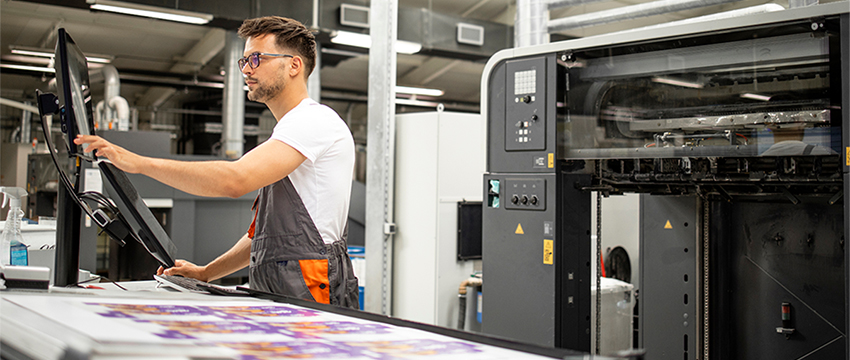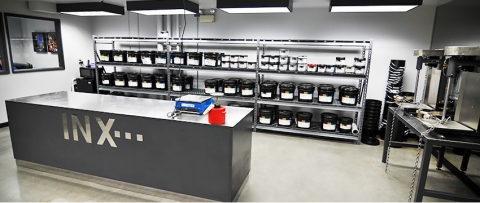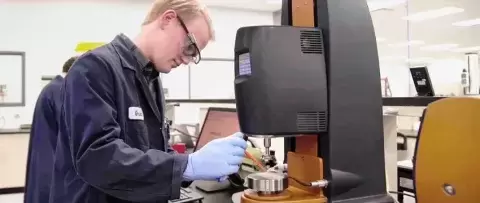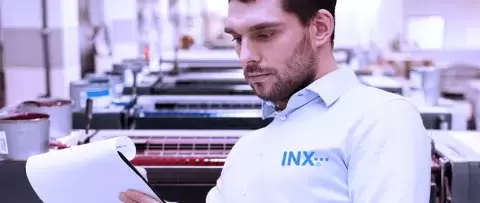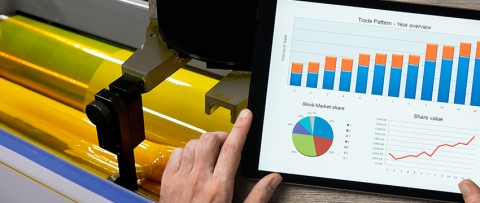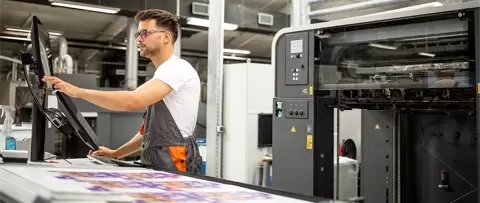What You Need to Know About Press Fingerprinting
Ensuring color and image consistency and pressroom efficiency
How do you make sure packages have the color, images, and contrast recognized by consumers and specified by brand managers? Press fingerprinting, also referred to as ‘press characterization’ or ‘calibration’ in the case of offset and digital print, helps converters ensure that the specifications from brand managers are achieved on the package. Yet, many converters and printers may not realize that, when done correctly, press fingerprinting will also increase pressroom efficiencies and throughput, reduce waste, improve press speeds, and predictably and repeatedly assure quality packaging that matches customer proofs. INX International works with customers to support the press fingerprinting process and ensure that jobs match across offset, flexo, gravure, and digital platforms.
What is Press Fingerprinting?
A press fingerprint is a print trial/benchmark that is used by pre-press to establish, measure, and record normal production conditions of the press. This enables the pre-press department to develop ICC profiles to apply to designs that will be run on that specific press, under the same run conditions. The goal of a fingerprint is to capture all press conditions and print quality across the entire design under repeatable conditions using specific materials and run conditions.
Why Fingerprint a Press?
Color management is a significant driver for the practice of press fingerprinting. Color plays a critical role in purchasing decisions, and color management can be a complex process. Brand owners want attention-grabbing packaging with accurate, consistent color. Designers want fast, precise color selection and assurance that what they envision is what they get on the printed piece. Printers and package converters want a consistent and cost-effective approach to color management.
The increase in omnichannel marketing and retailing has increased the complexity of color management. Ensuring a brands’ experience is consistent and recognizable across marketing channels isn’t optional. Managing color as brands increasingly incorporate digital technology and connected touchpoints makes it even more important to ensure color consistency across platforms, technologies, and geographies. The way each press lays down ink is unique. Each press prints at different speeds, pressures, dot percentages, etc. You need to know exactly how your presses print so that you can deliver the results your customers expect.
Fingerprinting also helps you determine whether your press is operating in peak condition (or not) at any given time. When we conduct an audit of a customer's press room and color management process, we frequently uncover opportunities to reduce color inconsistencies and quality issues and improve efficiencies in their color management process. Press fingerprinting documents how your press prints with variables (inks, tapes, anilox rolls, cylinders, etc.) identified during the press optimizations.
DOWNLOAD
Make sure you are considering all press optimization variables
Download Print Variables List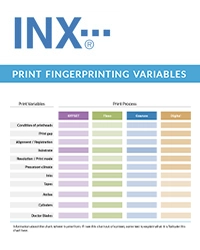
How to Fingerprint a Press
When fingerprinting, we recommend implementing the G7 Method. G7 is an international standard for calibrating printing presses and the proofing systems to a common, visual, neutral grayscale appearance. It’s a critical component of brand color management and can virtually bring color consistency across multiple platforms worldwide. G7 is managed by and is a registered trademark of IDEAlliance, a not-for-profit association. With certified IDEAlliance G7experts on staff, INX has the knowledge and technical resources to help our print partners achieve G7 Master Printer Certification.
It’s important that the conditions of your fingerprint match the actual printing conditions so you can get the most accurate results. Your Press should have already been optimized prior to the fingerprinting, otherwise the results may be skewed. During the optimization process you should conduct a banded anilox trial to determine which anilox should be used. It is also important to identify the best combination of print variables to achieve your design requirements during the optimization process. The following five steps provide a high-level overview of the fingerprint process.
- Use the inks, substrates, and backing that was selected during the optimization process.
- Check your cylinders and sleeves for TIR and consistency.
- Run your press at the same speeds and settings as production runs.
- Use clean/new components, such as anilox’, doctor blades, backing, etc.
- Let the press run for a minimum of 15 minutes before collecting samples to measure. This will allow for plates to heat/swell to running condition, inks to stabilize at running temp, and dryers to achieve desired set points.
The Benefits of Press Fingerprinting
Press fingerprinting provides the predictability, consistency, and repeatability needed to match customer proofs each and every time. Customer satisfaction and retention are essential benefits of press fingerprinting. Regularly conducting press fingerprinting helps to eliminate press and color variability and ensures the color consistency and repeatability your customers require.
Press fingerprinting also streamlines the process for future runs of the same product and increases overall pressroom efficiency and throughput. You don’t have to stop and start or redo an entire run because it didn’t meet expectations. Efficient workflows that improve print quality, shorten make-ready times, and reduce waste enable you to be more flexible and agile and help you to serve your customers better and positively impact your bottom line.
Conclusion
Obstacles that keep you from meeting customer requirements cost you time and money. Regularly fingerprinting your presses saves you the trouble of inaccurate prints before you begin. And, if you don’t have the in-house expertise to conduct the fingerprinting process, we can help. From pressroom assessments and press fingerprinting, to product selection and trial support with continuous improvement recommendations, our Color Perfectionists and G7 experts help brand owners, graphic designers, and printers deliver brand colors accurately and consistently across the globe.




